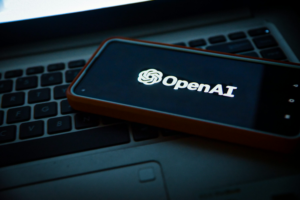Artificial intelligence (AI) is rapidly transforming our world, bringing forth incredible advancements in various fields. However, with great power comes great responsibility. As AI becomes more sophisticated, so too do the potential vulnerabilities that malicious actors can exploit. This article delves into the different ways AI can be exploited and explores strategies to mitigate these risks.
Understanding the Exploits: Unveiling the Threats

Here are some of the common ways AI can be exploited:
- Data Poisoning: AI systems rely on data to learn and make decisions. Malicious actors can introduce biased or inaccurate data into the training process, causing the AI to make biased or incorrect decisions. Imagine a loan application AI system trained on biased data, leading to unfair rejections for certain demographic groups.
- Model Hacking: Hackers can exploit vulnerabilities in the AI model itself, manipulating its outputs to achieve their goals. This could involve altering the code or manipulating the input data to force the AI system to deliver a desired outcome. For instance, a hacker might manipulate a facial recognition system to misidentify someone.
- Adversarial Attacks: These attacks involve creating specially crafted inputs designed to confuse or mislead an AI system. Imagine creating an image that appears harmless to humans but triggers a self-driving car’s emergency braking system due to its specific design.
- Social Engineering: AI systems can be susceptible to social engineering tactics designed to manipulate them. This could involve tricking a chatbot into revealing sensitive information or persuading a virtual assistant to perform unauthorized actions.
Building a Fortified Wall: Strategies to Mitigate AI Exploits
Here are some key strategies to minimize the risk of AI exploits:
- Data Quality and Security: Prioritize high-quality, unbiased data for training AI models. Implement robust data security measures to prevent manipulation or poisoning.
- Model Testing and Monitoring: Rigorously test AI models for potential vulnerabilities before deployment. Continuously monitor deployed models for any unusual behavior that might indicate an exploit.
- Explainable AI: Develop AI systems that can explain their reasoning and decision-making processes. This transparency allows humans to identify potential biases or errors in the system.
- Security Awareness and Training: Educate everyone involved in the development and deployment of AI systems about the potential risks of exploits. Develop robust security protocols to safeguard systems and data.
- Regulation and Oversight: As AI technology continues to evolve, regulations and oversight frameworks are crucial to ensure responsible development and deployment, minimizing the risk of malicious use.
The Road Ahead: A Collaborative Effort
Mitigating AI exploits requires a collaborative effort. Developers, researchers, policymakers, and the general public all have a role to play. By prioritizing data security, fostering transparency in AI models, and implementing robust security measures, we can harness the power of AI for good while minimizing the risks associated with exploits.
The future of AI holds immense potential. By addressing the vulnerabilities and working together, we can ensure that AI continues to be a force for positive change in the world.








